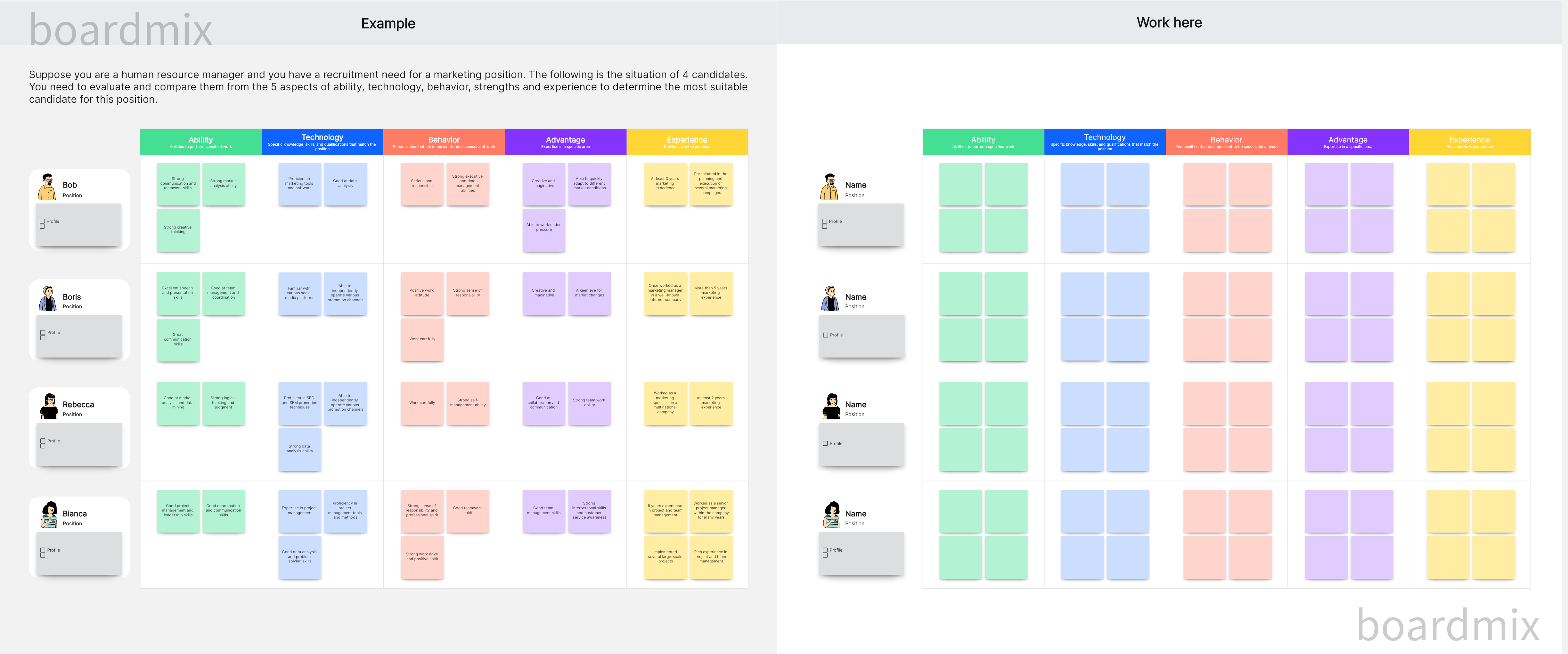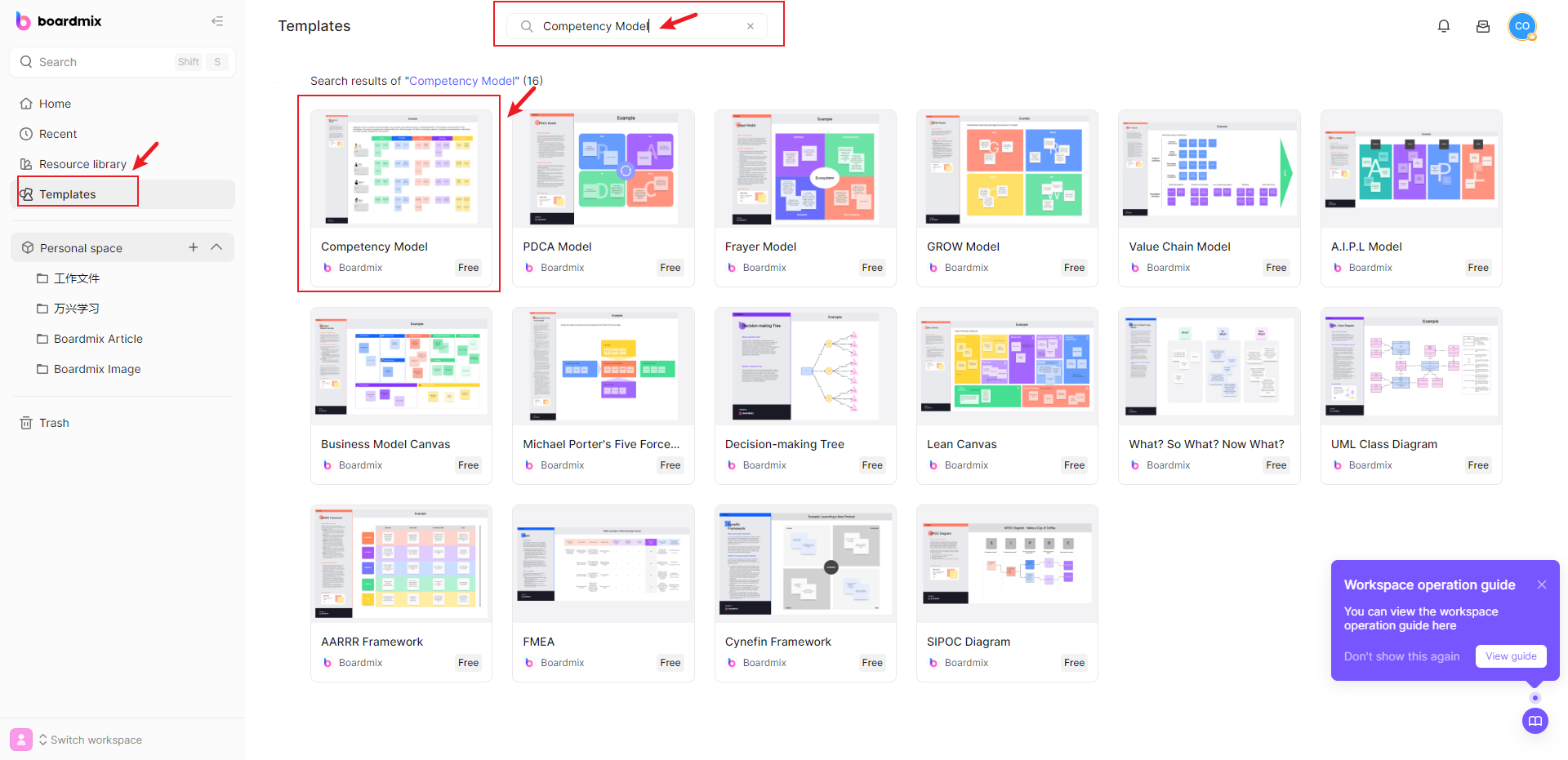What is the Competency Model for Employees?
The employee competency model is a framework designed to clarify the specific skills and behaviors that employees must demonstrate in their work. It divides the skills and behaviors required for a role into a series of "competencies," and provides clear descriptions for each competency. These competencies can include technical skills, soft skills (such as communication skills and teamwork), and leadership, etc.
Clarify Role Expectations
By defining the key skills and behaviors needed for a role, the employee competency model can help set role expectations, allowing employees to understand what level they should reach in their work.
Promote Employee Development
The employee competency model can serve as a development tool, helping employees identify their own development needs, formulate personal development plans, and track their progress.
Support Recruitment Decisions
In the recruitment process, the employee competency model can provide a basis to help recruiters identify and assess whether potential candidates have the required skills and behaviors.
Guide Performance Management
The employee competency model can also be used in performance management. By comparing with the competency model, managers can more accurately assess employee performance and provide targeted feedback.
The employee competency model is a powerful tool that can help organizations clarify role expectations, promote employee development, support recruitment decisions, and guide performance management.

Benefits of Competency Model Examples for Employees
Competency model examples provide a clear understanding of what is expected from employees in their roles.
1. Clear Expectations
Competency models provide clear expectations and standards, which help employees understand what is required to succeed in their roles.
2. Career Development
They serve as a roadmap for career development, helping employees identify the skills and behaviors they need to advance.
3. Performance Evaluation
Competency models can be used as a basis for performance evaluations, providing objective criteria for assessing employee performance.
4. Training and Development
They help identify gaps in skills and competencies, which can guide training and development efforts.
5. Recruitment and Selection
Competency models can also be used in the recruitment process to identify the best candidates with the right set of skills and behaviors.
Practical Competency Model Examples for Employees
Here are a few specific examples of employee competency models, covering different job roles.
1. Customer Service Representative
For a customer service representative, some key competencies might include:
Communication Skills: Communicating clearly and politely with customers.
Problem-Solving Ability: Effectively handling customer issues or complaints.
Product Knowledge: Understanding and mastering the company's products or services.
Calm Under Pressure: Keeping calm when dealing with angry or disappointed customers.

2. Project Manager
For a project manager, important competencies might include:
Organizational and Planning Abilities: Ensuring that projects proceed according to plan.
Leadership Skills: Guiding and motivating team members to achieve project goals.
Risk Management Ability: Identifying and responding to risks that may affect the project.
Decision-Making Ability: Making the best decisions when faced with multiple possible options.

3. Sales Manager
Key competencies for a sales manager might include:
Sales Skills: Being able to effectively sell products or services.
Interpersonal Skills: Building and maintaining good relationships with customers.
Market Analysis Ability: Understanding market trends and competitive environment.
Team Building and Leadership Skills: Leading the sales team, motivating them to achieve sales targets.

These are just some basic examples, real employee competency models are usually more specific, more detailed, and will be adjusted according to the specific needs of the organization.
Strategies for Developing Effective Competency Model Examples for Employees
Designing an effective employee competency model can be a daunting task, but the right strategies can make the process more streamlined and effective. Here are some useful strategies.
1. Set Clear Goals in Advance
Before you start developing a competency model, you need to know clearly what you want to achieve. Do you want the model to guide recruitment decisions, provide direction for employee development, or serve as a tool for performance evaluation?
2. Fully Understand Role Requirements
Deeply understand the skills and behaviors required for each role. Talk to employees who hold these roles, or have them fill out questionnaires, to understand what skills are involved in their daily work.
3. Select Relevant Competencies
Identify a set of broad competencies that span across roles, such as leadership, teamwork, innovative thinking, etc. At the same time, choose specific skills for specific roles - for example, programming skills are important for IT department employees.
4. Define Clear Standards for Each Competency
Clearly state the standards that each competency should reach. For example, an excellent standard for "teamwork" might be "being able to effectively cooperate with colleagues on multiple projects and share information and resources".
5. Get Feedback and Revise Model
Share the preliminary model with employees and managers and listen to their feedback. Make necessary revisions based on their feedback.
6. Provide a Specific Implementation Plan
After completing the model design, develop an implementation plan including how to apply the model in recruitment, employee development performance management, etc.
In summary, designing an effective employee competency model requires a deep understanding of organization and roles; clear goal setting; continuous feedback collection, and improvement.
How to Create Competency Model Examples for Employees in Boardmix?
Creating a competency model example for employees in Boardmix requires following a series of steps. The guide below will take you through how to do this.

1. Log In and Access Boardmix
First, you need to log into Boardmix. If you don't have an account yet, you need to register one. After logging in, you will be taken to the homepage.

2. Search for Competency Model Template
In the left navigation bar, click on Template, then search and select the competency model you want. Or choose to create your own new template.

3. Fill in Model Information
You will be asked to fill in some basic information, including the name of the model, description and objectives. In addition, you also need to choose a type for the model. This can be a generic type or a type specific to a certain position or department.

4. Add Competencies
Next, you need to add competencies for the model. These competencies should be chosen based on the selected model type and objectives. Each competency needs to fill in a name and description and may need to add related behavior standards or levels.
5. Save and Share Model
After adding all the necessary information and competencies, you can save and share your model so that other users can see and use your created model.
7. Feedback and Improvement
Finally, remember to regularly collect feedback and update and improve the model based on feedback.
In summary, creating an employee competency model through Boardmix requires clear goal setting, a deep understanding of role requirements, selection of relevant competencies, definition of clear standards, and collection of feedback for continuous improvement. Through these steps, you can effectively create an employee competency model that meets your organization's needs in Boardmix.









